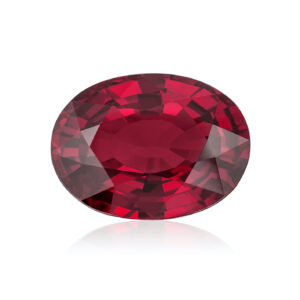By Jennifer Heebner, Editor in Chief
Dealers in top-quality gems tell AGTA that goods are mostly moving for fourth-quarter sales, but replacing them is difficult and expensive.
Jewelers have been enjoying record sales for the past few years, but as inflation reared, fuel costs skyrocketed, and travel habits returned midway through 2022, many feared a slowdown. Fall data from both Mastercard SpendingPulse and new jewelry trend analytics firm Tenoris report declines in October jewelry sales, though some dealers’ anecdotal evidence challenges those accounts. To date, most recessionary concerns among purveyors of unheated blue Sapphires and Rubies appear not to have materialized.
“I thought there would be a slowdown but there hasn’t been,” observes Allen Kleiman of A. Kleiman & Co. about his sales this year. “There’s a big movement toward quality.”
High Demand, Low Inventory
Most gemstone dealers whom AGTA spoke to revealed high demand and low supply for unheated blue and pink Sapphires and Rubies.
Sailesh Lakhi of Sparkles and Colors USA Inc. gets frequent requests for cornflower and royal blue unheated Sapphires in 3–8-carat sizes. “Demand is high—especially for matched pairs,” he says. He sees a 50% spike in interest for these goods from clients all over the world as well as a catch-22 trend. “It’s hard to feed the supply because of demand.”

Kleiman sees this predicament, too, noting that sales of his fine unheated Sapphires and Rubies are up about 10% over 2021. Similarly, he struggles to find “bread and butter sizes” of unheated blue Sapphires in 3–8 carats. “There’s less production from Sri Lanka and Madagascar, but goods are still coming out,” he maintains.
Dealers say those two countries are the biggest suppliers of top-end blue Sapphires. Mining halted in both places during the pandemic. Sri Lanka has since resumed operations, but the tiny Asian island nation is reeling from an economic meltdown earlier this year. Meanwhile, the East African island republic currently forbids exports of rough gems. Insiders say that dilemma is magnified by the country’s lack of heating and cutting facilities. “This has created a lot of pressure on Sapphire supply worldwide,” notes Afshin Hackman of Intercolor USA.
Finding Fine Goods
Because of pressure in the supply chain, fewer goods on the market inevitably means less top-end material available.
Ruben Bindra of B&B Fine Gems recently took his first overseas trip in nearly three years. He and son David Bindra traveled to Sri Lanka and Thailand in search of fine goods. They were scarce, and the duo was warned about sticker shock for procurable merchandise, but the trip was still a success.
“We bought a ton of material,” says Ruben. “We paid 15% more than in the past, but we and our clients are willing to absorb it. When you need material, the market adjusts.”

Particularly difficult to obtain are large unheated blue and pink Sapphires. With little to choose from—and everything hard to keep in stock—some of Bindra’s clients are forced to do what was once unthinkable: “They’re accepting heated pinks,” he says.
Fine Rubies, on the other hand, are a touch easier to get thanks to greater competition. “Miner Fura is now competing with Gemfields,” he adds. Both Fura and Gemfields have multiple Ruby auctions throughout the year.
Higher Prices
All dealers say that prices of top goods are sky high—to the tune of 100% for some unheated blue Sapphires. In fact, Jeremy Hakimi of Colorline Inc. has never seen them costlier and doesn’t expect them to fall. “I’ve never seen an unheated gem come down in price,” he says.
Hackman maintains that prices have grown so high they are almost untouchable. “What I would typically buy for $3,000 and sell for $4,000 at wholesale now costs $7,500,” he says.

Kleiman says his replacement costs on unheated Sapphires are up 20% over last fall. While lack of available gems is a root cause, the upside is a more educated consumer and mushrooming interest in colored stone jewelry. Shrewd consumers are partly driving the desire to buy better goods.
“Many people are realizing that the difference in price between fine goods and exceptional ones is not commensurate with the difference in rarity,” he says. “The quality of a finer gem may be 100 times rarer, but it’s still only 30% to 50% higher in price.”
This article is proprietary content for AGTA and may not be reproduced.
